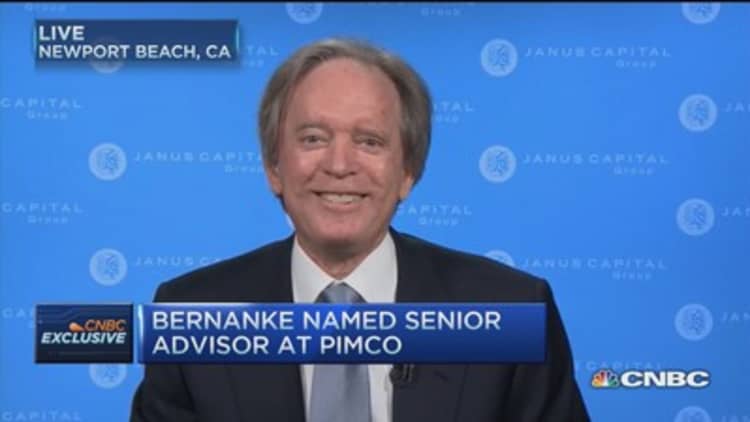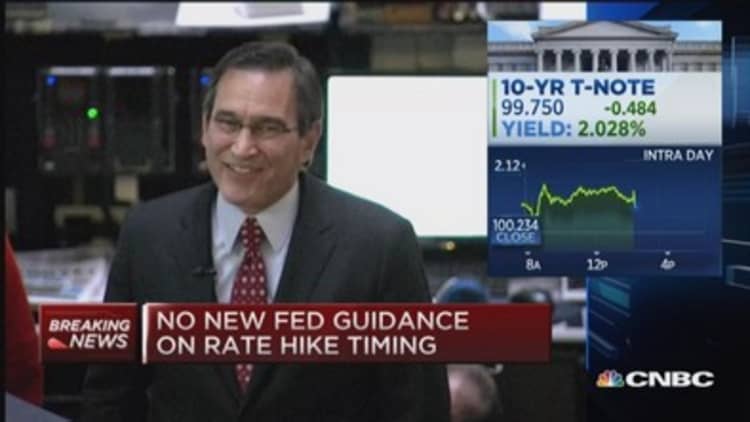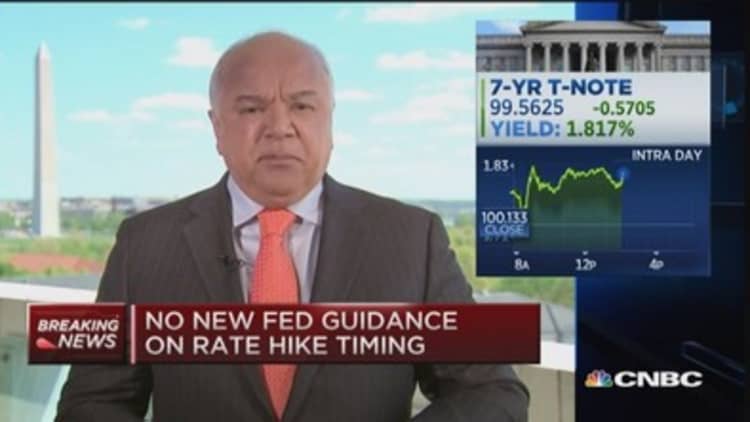


Following through on indications in March, the Federal Open Market Committee on Wednesday offered no changes to its zero interest rate policy.
Not only did it not hike rates, it also removed all hints for what may lie ahead. Calendar references were deleted completely from the post-meeting statement.
The FOMC indicated after its March meeting that a rate hike in April was unlikely. The U.S. central bank has kept its key funds rate anchored near zero since late 2008, amid the financial crisis.
Officials have indicated a desire to raise rates at some point this year, with the market now anticipating a September increase.
The move came amid a struggling U.S. economy that barely registered any growth at all in the first three months of the year—a meager 0.2 percent increase in gross domestic product, thanks to a stubbornly frugal consumer, strengthening dollar and rough winter.
However, many market participants believe the Fed is still on its course of tightening, though the timing remains a question.
"It's the long-term trend that matters to the Fed," said Michael Arone, chief investment strategist for State Street Global Advisors' U.S. intermediary business. "They've been very consistent on the idea of data dependence.:"
Read MoreConsumers holding on to their wallets for dear life
Financial markets have come to rely on the Fed's easing policies over the past six and a half years, and stocks were lower ahead of the FOMC statement release.
The committee noted some progress in the economy, halting though it may be. The statement acknowledged that growth "slowed during the winter months," though calling the factors leading to the slowdown "transitory."
"Growth in household spending declined; households' real incomes rose strongly, partly reflecting earlier declines in energy prices, and consumer sentiment remains high," the FOMC said.
"They are willing to look through that weakness," said John Bellows, portfolio manager at Western Asset Management. "They think it's oil, they think it's the dollar and they think the economy is going to be stronger in the second and third quarter. And whether or not we hike in September or later really depends on whether they are right on that call."
There was no post-meeting press conference scheduled for the meeting, so investors were left to their own to read between the lines. Markets reacted little to the announcement, with stocks experiencing a mild decline and bond yields rising. The benchmark 10-year Treasury note yielded 2.05 percent shortly after the announcement.
Read MoreHere'swhat changed in the new Fed statement
"The market is quite comfortable that the Fed is going to raise interest rates at some point this year," Arone said. "What could happen is the volatility could come over when next Fed rate hike is, when that will come and where will it go."
The April statement differed from the previous month in that it eliminated some descriptions of economic conditions, particularly in employment. March's payrolls number fell of sharply from trend, registering just 126,000 new jobs.
There were no dissenting votes from this month's statement.
—CNBC.com's Nana Sidibe contributed to this report.


